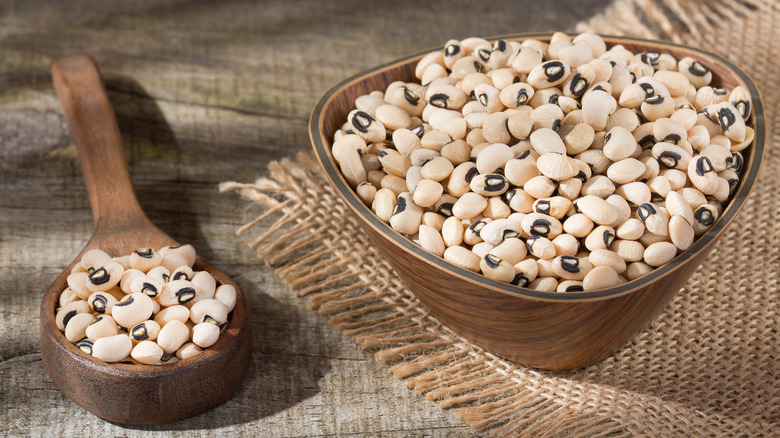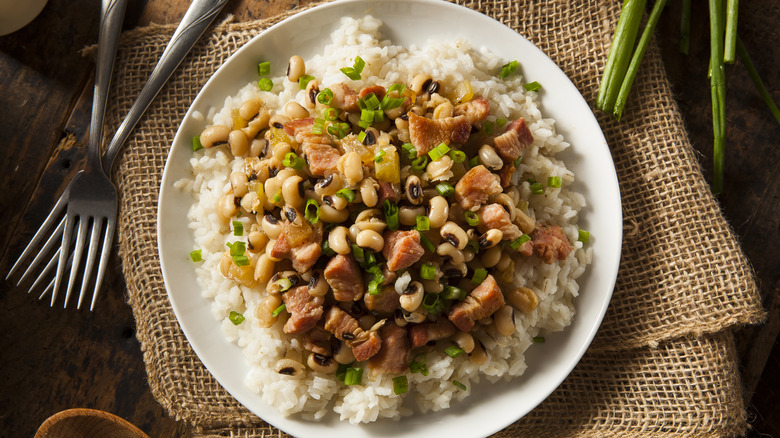Why Black-Eyed Peas Are A Southern New Year's Tradition
When we think of New Year's, we likely think of Champagne, finding someone to kiss at midnight, and the gaudy glasses and sequined hats. While those fun traditions also exist in the South, New Year's isn't complete without certain dishes on the table. Black-eyed peas, cornbread, and leafy greens are traditionally served as holiday fare in the South, mostly for superstitious reasons, but they're also incredibly delicious.
The tradition of serving black-eyed peas on New Year's is rumored to be influenced by a couple of different cultures, but the crop itself made its way to the American South from West Africa (via Garden & Gun). Black-eyed peas are actually a type of bean, but their name originates from a category in West Africa called cowpeas. The crop was transported to the American South via the Atlantic slave trade and served as the provisions for the captives on the ships. When the enslaved Africans arrived in the South, they started growing black-eyed peas in the plantation gardens for themselves and the slaveholders. Although the story of how black-eyed peas made their way to the South is tragic, they now serve as a symbol of hope moving into the New Year.
Black-eyed peas symbolize prosperity and good luck in the coming year
We know how black-eyed peas made their way to the U.S., but the origin around the tradition of eating them on New Year's is still up for debate. According to Southern Living, the tradition could have stemmed from as early as 500 A.D. from the Jewish holiday Rosh Hashanah, where black-eyed peas were eaten for good luck. Others cite West African traditions where black-eyed peas were served at special occasions like the birth of a child where they were believed to be a good luck charm (via Garden & Gun).
In Thrillist's list of 11 Foods to Eat for Good Luck in the New Year, they list black-eyed peas, leafy greens, pork, and cornbread, which can all be found on the table in the South and have different superstitions associated with them. The article explains that the shape of black-eyed peas is similar to coins and therefore they are rumored to encourage wealth. Some households have taken that idea one step further and put a dime in the water while cooking the beans and whoever receives the dime on their plate has an extra dose of good fortune (via Garden & Gun). The theme of prosperity in the New Year continues with collard greens and cornbread, which represent dollar bills and gold, respectively. Regardless if you believe in these superstitions, after the past couple of years, we need all the help we can get in the luck department so eat up!

